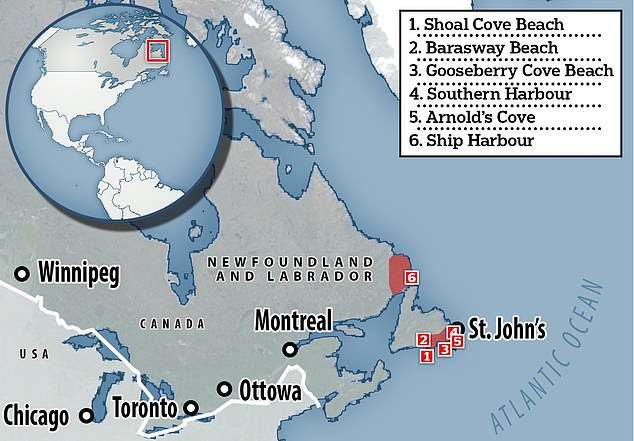Mystery ‘doughy’ white blobs are washing up on the coastline and no one seems to know what they are
Mysterious white blobs have been washing up on Newfoundland beaches for more than a month, prompting an investigation by Canadian authorities.
While beachcombers from the large landmass are used to spotting wreckage from the Atlantic Ocean, they, along with Canadian government scientists, are baffled by the sudden appearance of the chunks of white material, which are often covered in seaweed, sand and pebbles.
The stains, which began appearing at least on September 7, are said to smell of vegetable oil and look “like someone baked bread and did a bad job,” according to local resident Stan Tobin.
Another Newfoundlander, Philip Grace, said they resembled “touton” dough, referring to a local version of baked cookies.
The Mail and Globe reported that they were “strangely flammable with a pockmarked, slimy surface and firm, spongy flesh,” adding that they “ranged in size from a toonie [two-dollar coin] to signs.’
Countless amateur sleuths, wannabe scientists, and concerned citizens have put forward their own theories about where the blobs came from.
The spots, which began appearing at least on September 7, were described as smelling of vegetable oil and looking “as if someone was trying to bake bread and did a bad job.”

Samantha Bayard, a spokesperson for Environment and Climate Change Canada, raised the possibility of criminal involvement with the blobs: “If enforcement officers find evidence of a possible breach of federal environmental law, they will take appropriate action in accordance with applicable compliance and enforcement rules. policy.’
Some said they were fungi, others believed they were made from palm oil, paraffin wax or even ambergris – a rare and valuable substance produced by whales and used in the perfume industry.
Their guesses were as good as those of government scientists, who have been investigating since they were first made aware of it on September 7.
Scientists from Canada’s Department of Fisheries and Oceans told the Globe and Mail: ‘We are quite certain that the mysterious substance receiving media attention is not a sea sponge, nor does it contain biological material.
“The blob or the blob or whatever it is, we don’t think it’s a sponge because there have been people who have set it on fire and it’s burning.
“We think there’s some kind of oil in there.”
Currently, all scientists can tentatively confirm that the blobs are not made of any form of petroleum hydrocarbon, petroleum lubricant, biofuel, or biodiesel.
But more tests are planned, which could take up to a month to complete.
Nadine Wells, section chief of the marine ecological research group at DFO’s Northwest Atlantic Fisheries Center in St. John’s, said, “We’re trying to do our best to do our job and get the answer. Until then, it’s hard for us to say exactly what it is.
“It’s really mysterious, something we’ve never seen before, and we have no idea what it is.”
